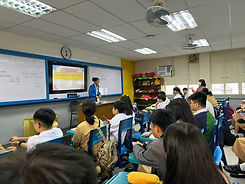SEA-Teacher Batch 10
P h i l i p p i n e s

Teaching Practice
My teaching practices encompassing four sections: procedures of teaching, time management, classroom management, and problem-solving.

Procedures
of Teaching
My lessons involve three parts: before the lesson, during the lessonand after the lesson
BEFORE THE LESSON
Motivational Activity: The students will work together as a class to play a sentence-picture game. The game will provide an image from the story “Some Families, Very Large”.
-
Show the students a picture related to the story "Some Families, Very Large"
-
Students will then be asked to send two volunteers to create one sentence each based on the image and read their sentences aloud.
-
Ask the students to identify the subject and the verb in the 1st sentence
-
Ask the students to identify the subject and the verb in the 2nd sentence
-
Let the students explain the difference of the sentences
-
The teacher explains the differences among the two sentences, highlighting that they differ in terms of the subject and the verb, linking this discussion to the concept of subject-verb agreement.
DURING THE LESSON
Lesson Presentation Flow:
-
Presentation (Using Sentences from the Students)
-
Revisit the sentences provided by the students.
-
Select an example to analyze together. Highlight the subjects and verbs in each sentence and discuss whether the verb ends in “s” or not.
-
Ask: “Why does the verb form change?”
2. Illustration and Examples:
-
Introduce more sentences for analysis
-
Analyze each example as a class, guiding students to identify the subject and decide on the correct verb form.
3. Generalization (Explaining the Rules)
-
Rule 1: Two or more subjects joined by “and” are plural and require a verb form without an “s.”
-
Rule 2: Indefinite pronouns are usually singular and take a verb form that ends in “s.”
-
Rule 3: Collective nouns are singular and require a verb form that ends in “s.”
-
Rule 4: Units of measurement (time, distance, money, weight) are singular and take a verb form that ends with “s.”
-
Rule 5: For relative pronouns (who, that, which), the verb agrees with the antecedent.
4. Application (Worksheets)
-
Students practice identifying subjects and choosing the correct verb form by answering worksheets printed by the teacher.
-
The teacher will also provide feedback and clarify any misunderstandings.
AFTER THE LESSON
Activity 1: Underline the correct form of the verb in the parentheses that matches the subject.
Activity 2: Short Story “SOME FAMILIES, VERY LARGE”
Using Subject-Verb Agreement


Education High School allocates one hour per class period. I need to divide the time appropriately among pre-lesson activities, content delivery, and review exercises at the end of the class. The allocation should be well-balanced and not overly rushed to ensure that students thoroughly understand the material I teach.
However, I believe that I have allocated time for all activities appropriately and managed my class effectively. I also noticed that my students enjoy and engage in my teaching with enthusiasm and pleasure.
Time
management
& organizing
adtivities

Classroom
Management
Secondary school students are highly enthusiastic about learning. They are energetic and often quite vocal. Before starting the class, I take time to discuss and seek students' cooperation, encouraging them to focus during the lesson. The students respond very positively to this approach.
Although there may be some lively moments during activities, the students promptly settle down when I ask for calm. Whenever they have questions about the lesson content, they raise their hands and ask directly about what they don’t understand. After I provide an explanation, they always express their gratitude.
Overall, the class is orderly and well-managed. Both the students and I, as the teacher, thoroughly enjoy the lesson, making it a delightful experience for everyone involved.

Problem
-
solving
Teaching in the Philippines was my first teaching experience, and the most challenging aspect was having to use English exclusively throughout the lessons. This challenge pushed me to prepare extensively before each class to ensure I was ready and confident in delivering my lessons effectively.
As mentioned earlier, my challenge was using English throughout the teaching process. Coming from Thailand, where Thai is the primary language of instruction, adapting to the Philippines, where English is predominantly used, required significant effort. This situation compelled me to prepare thoroughly before conducting my lessons to ensure I could teach effectively in a language different from my native tongue.
One of the challenges in teaching was the difference in English accents, both mine and the students'. At times, students had difficulty understanding certain English words I taught due to pronunciation differences.
To address this issue, I wrote the unfamiliar words on the board, which proved to be an effective solution to some extent.
From this experience,
I discovered both strengths and weaknesses in my teaching.
I received both praise and constructive feedback, which I plan to use to improve and adapt my teaching methods in the future.
My goal is to continually enhance the effectiveness of my lessons and provide the best possible learning experience for my students.
Finally, I would like to thank everyone who supported me behind the scenes during this experience.
I sincerely hope that my journey can serve as a valuable example and resource for those who come across this account.

